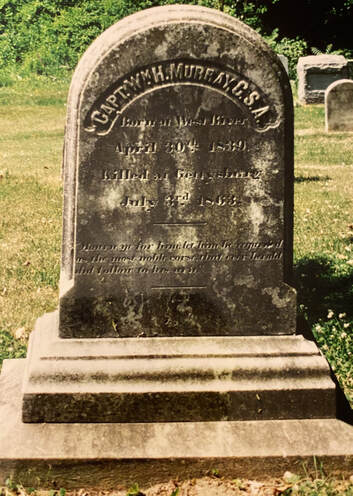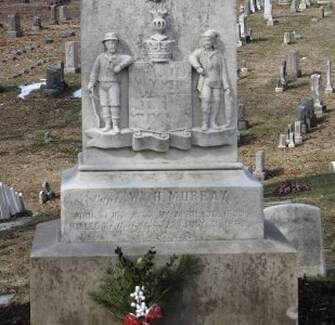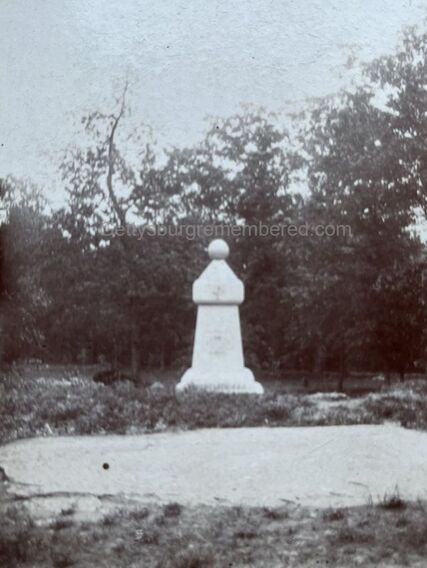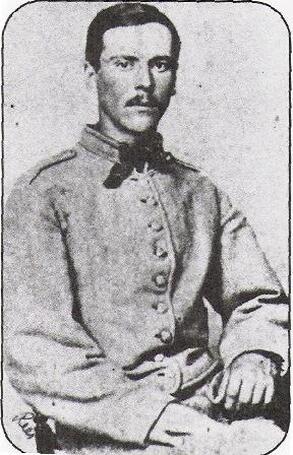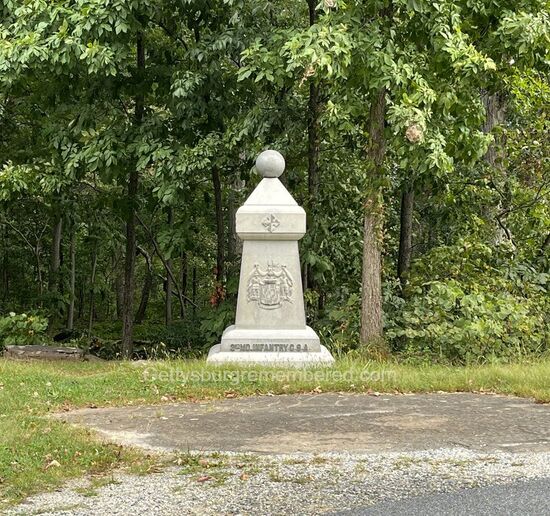The Battle of Gettysburg: Stories of Fatal Encounters
Captain William H. Murray
1st Maryland Battalion
Killed July 3, 1863
1st Maryland Battalion
Killed July 3, 1863
 Captain William H. Murray
Captain William H. Murray
William Henry Murray was Captain of Company A, 1st Maryland Battalion. His regiment was part of Brig. Gen. George Steuart's brigade. On July 3rd, Steuart's brigade would charge the Northern Line located on Culp's Hill. In this attack Murray would be killed.
Captain Murray with his men occupied empty Federal earthworks on the evening of July 2. These "works" would be vacated by Federal soldiers when they were required to move to the southern end of the battlefield.
At 4:30 A. M. on July 3rd Federal artillery began shelling southern troops on Culp's Hill. Now with reinforcements, southern troops again resumed their attacks on the upper hill. With these attacks, the 1st Battalion was ordered to attack Federal troops in their front. Major Goldsborough, commanding the 1st when hearing of this order noted "it was nothing less than murder to send men into that slaughter pen." Leaving the earthworks, Steuart's brigade would be reposition for the attack. The 1st Battalion found its line astride a stonewall that ran westwardly. General Stuart who was behind Captain Murray's Company A, would order the charge. One soldier would hear Captain Murray say "Use your bayonets, boys; don't fire." With this order, the brigade began their attack. Approximately 200 yards to the northwest were the northern troops that the attack was focused on. As the Southern troops approached and within 100 yards of the northern line they received a devastating fire. One Marylander would later write "The death shriek rends the air on every side." After moving "a considerable distance" and with men falling all around the attack faltered. While waving his sword, perhaps a signal to fall back, Captain Murray was struck in the throat and killed. Murray was buried on the field.
Several weeks after his death, Murray's half sister Elizabeth and a family servant would return to Gettysburg. Finding the grave site, Murray's remains would be carried by wagon and re-interred at the Christ Episcopal Church Cemetery, Owensville Maryland.
Captain Murray with his men occupied empty Federal earthworks on the evening of July 2. These "works" would be vacated by Federal soldiers when they were required to move to the southern end of the battlefield.
At 4:30 A. M. on July 3rd Federal artillery began shelling southern troops on Culp's Hill. Now with reinforcements, southern troops again resumed their attacks on the upper hill. With these attacks, the 1st Battalion was ordered to attack Federal troops in their front. Major Goldsborough, commanding the 1st when hearing of this order noted "it was nothing less than murder to send men into that slaughter pen." Leaving the earthworks, Steuart's brigade would be reposition for the attack. The 1st Battalion found its line astride a stonewall that ran westwardly. General Stuart who was behind Captain Murray's Company A, would order the charge. One soldier would hear Captain Murray say "Use your bayonets, boys; don't fire." With this order, the brigade began their attack. Approximately 200 yards to the northwest were the northern troops that the attack was focused on. As the Southern troops approached and within 100 yards of the northern line they received a devastating fire. One Marylander would later write "The death shriek rends the air on every side." After moving "a considerable distance" and with men falling all around the attack faltered. While waving his sword, perhaps a signal to fall back, Captain Murray was struck in the throat and killed. Murray was buried on the field.
Several weeks after his death, Murray's half sister Elizabeth and a family servant would return to Gettysburg. Finding the grave site, Murray's remains would be carried by wagon and re-interred at the Christ Episcopal Church Cemetery, Owensville Maryland.
After his death Murray would be remembered by many friends and comrades. Former Confederate General Bradley Johnson recalled Murray as "the darling of his comrades, as he was the mirror of gentle chivalry." George Booth in 1894 would state that Murray "will ever live in memory of those who knew him, and their sorrow over his early fall is just as keen today as it was thirty years ago. To their children will his character be handed down as an example worthy of emulation."
An eyewitness account from Union Veteran William Stork in his 1903 Baltimore Sun article would remember walking among the dead Confederates on July 3rd, "gallant conduct waving his sword over his head as he charged on us, leading his men." This Confederate officer, as a fellow Union comrade from Baltimore pointed out was Captain Murray. Stork wrote he then "stooped down and cut a button off his jacket, which button I, after the war gave to a friend of his in Baltimore."
George Thomas a comrade of Murray would note "while lying on the battlefield I grieved to see poor Bill Murray stretched out stiff and cold. Oh! How I felt. I like him, and he was a fine soldier, a fine Captain. He used to look forward to such pride and joy to an entrance into Baltimore, and to think his life was thrown away."
An eyewitness account from Union Veteran William Stork in his 1903 Baltimore Sun article would remember walking among the dead Confederates on July 3rd, "gallant conduct waving his sword over his head as he charged on us, leading his men." This Confederate officer, as a fellow Union comrade from Baltimore pointed out was Captain Murray. Stork wrote he then "stooped down and cut a button off his jacket, which button I, after the war gave to a friend of his in Baltimore."
George Thomas a comrade of Murray would note "while lying on the battlefield I grieved to see poor Bill Murray stretched out stiff and cold. Oh! How I felt. I like him, and he was a fine soldier, a fine Captain. He used to look forward to such pride and joy to an entrance into Baltimore, and to think his life was thrown away."
|
Captain William Murray, 1st Maryland Battalion. Killed on Culp's Hill July 3, 1863 |
|
